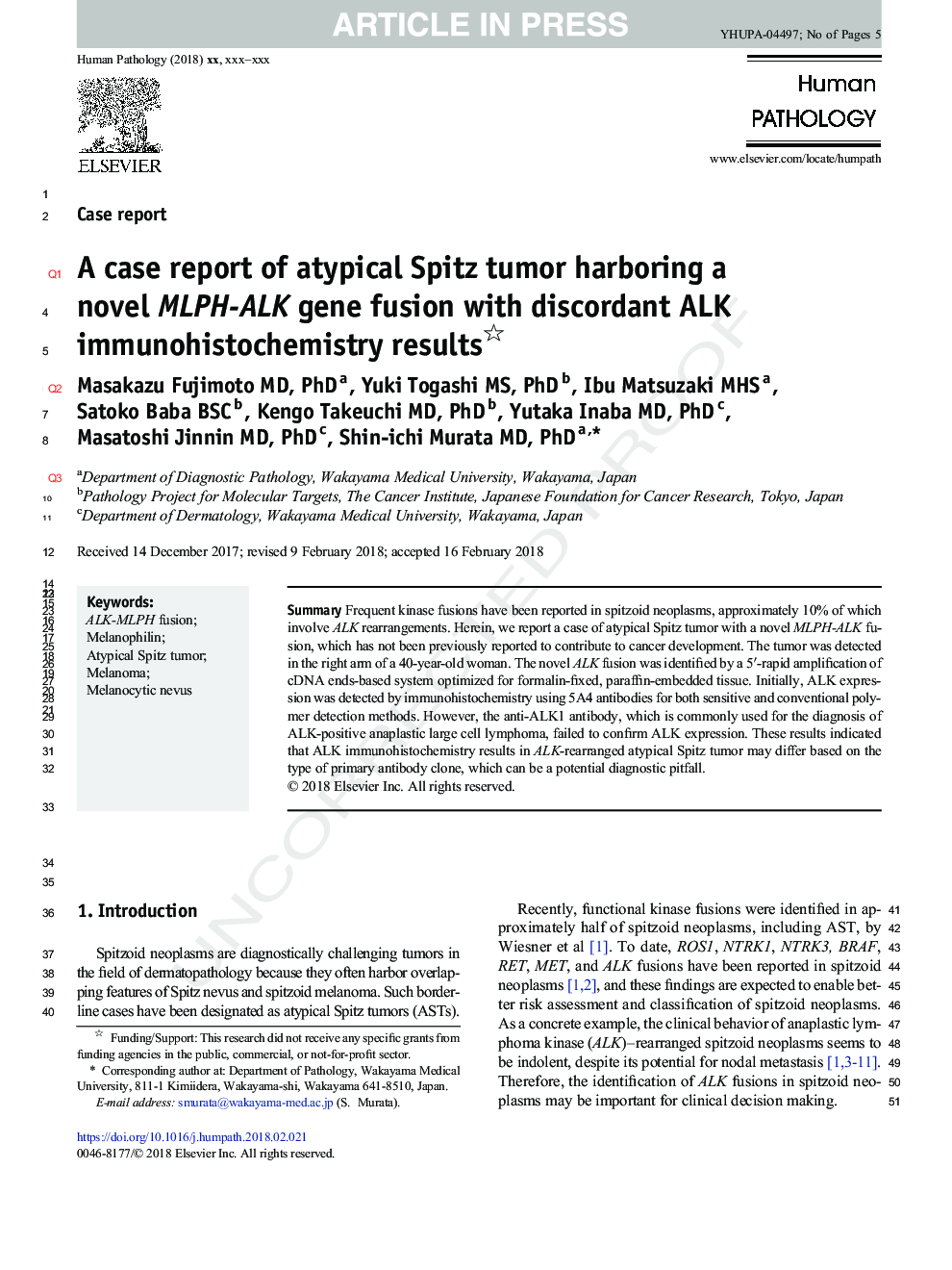| Article ID | Journal | Published Year | Pages | File Type |
|---|---|---|---|---|
| 10091026 | Human Pathology | 2018 | 6 Pages |
Abstract
Frequent kinase fusions have been reported in spitzoid neoplasms, approximately 10% of which involve ALK rearrangements. Herein, we report a case of atypical Spitz tumor with a novel MLPH-ALK fusion, which has not been previously reported to contribute to cancer development. The tumor was detected in the right arm of a 40-year-old woman. The novel ALK fusion was identified by a 5â²-rapid amplification of cDNA ends-based system optimized for formalin-fixed, paraffin-embedded tissue. Initially, ALK expression was detected by immunohistochemistry using 5A4 antibodies for both sensitive and conventional polymer detection methods. However, the anti-ALK1 antibody, which is commonly used for the diagnosis of ALK-positive anaplastic large cell lymphoma, failed to confirm ALK expression. These results indicated that ALK immunohistochemistry results in ALK-rearranged atypical Spitz tumor may differ based on the type of primary antibody clone, which can be a potential diagnostic pitfall.
Related Topics
Health Sciences
Medicine and Dentistry
Pathology and Medical Technology
Authors
Masakazu MD, PhD, Yuki MS, PhD, Ibu MHS, Satoko BSC, Kengo MD, PhD, Yutaka MD, PhD, Masatoshi MD, PhD, Shin-ichi MD, PhD,
